Reviews
Fritz Lang
Germany, 1922
Credits
Review by Cullen Gallagher
Posted on 12 March 2014
Source Masters of Cinema DVD
Categories Silent Lang
Metropolis may be Fritz Lang’s most famous silent film, and its popularity probably exceeds that of any of his sound films. However, more so than Metropolis or anything else from his silent period, Dr. Mabuse the Gambler is the moment when Lang fully comes into his own. It is the first fully formed, mature expression of the style and substance that would dominate the majority of his career: crime stories rendered through high chiaroscuro, art deco ornamentation, and geometric compositions, entrapping characters in a shadowy, nightmarish perversion of their everyday world.
Released in 1922, Dr. Mabuse the Gambler was Lang’s eighth feature film as a director since his start only three years prior. Clocking in at four-and-a-half hours, it was also his longest project to date (like his earlier film, The Spiders, it was released in two installments). Based on a novel by Norbert Jacques, the story is about a nefarious psychoanalyst who uses his insight into the human mind, hypnosis, and mass psychosis to build a criminal empire. The film begins with an expertly timed train heist that illustrates not only the cunning and brute force of Mabuse’s mob, but also the brilliance of his mind and the far extent of his reach and impact on society. Mabuse’s henchmen assault a top-secret courier on a train, steal international trade documents, toss the documents from the moving train into a car as it passes over a bridge, and stay in touch with the boss by illegally tapping into public telephone wires to give the boss updates on the go. Mabuse uses the insider information to manipulate the stock market, first driving the prices low, then buying up the stock and raising the prices, and then selling them at the inflated price.
As the film progresses, Mabuse’s operation unfolds in all its devious magnificence. Donning different disguises, he is able to play any number of different roles, moving in and out of the public eye while never being identified. He uses hypnosis to worm his way into exclusive gambling halls and mind control to convince his millionaire opponent that he is losing (despite his having the better hand). He has a team of blind men counterfeiting bills for him in a secret underground laboratory. His minions can infiltrate prisons to deliver poison and explosives to operatives. He is able to orchestrate assassinations in public. During one of his mentalist lectures, he is even able to spellbind Chief Inspector Norbert von Wenk, the police detective determined to nab Mabuse, into attempting suicide. All of Germany - the public, the police, the law, the economy - is seemingly under Mabuse’s thumb. And it is up to Wenk to nail a criminal who is always changing faces and names, who is as anonymous as nobody but more powerful than anybody.
Despite naming the film after one of its characters, Dr. Mabuse the Gambler is not a film about characters—it is a film about design. Lang himself explained: “Listen. When I make superproductions, I am interested in people’s emotions, in the audience’s reactions… In an adventure film like Dr. Mabuse or Spione, there is only pure sensation; the development of character doesn’t exist.” The “pure sensation” he refers to has to do with the excitement of the plot, an almost never-ending string of escapades and escapes, pursuits and performances, and swindles and schemes. But more remarkable than these effects are their setup, both in terms of narrative structure and on-screen composition. As complex as the plot is, much of the exposition is rendered visually, resorting to intertitles only when absolutely necessary, and preferring whenever possible to use telegrams, memos, newspaper headlines and other sources within the world of the story as a means for conveying necessary information.
Throughout the film, Lang binds narrative and visual design to create a unified cinematic impact. The doorframe to Mabuse’s house is covered in small, ocular designs, a reminder that Mabuse is always watching (and, coincidentally, foreshadowing the third of Lang’s Mabuse trilogy, The Thousand Eyes of Dr. Mabuse). The gambling dens and nightclubs at times resemble three-dimensional Kandinsky arrangements, which not only creates an air of decadent modernity, but also reinforces the suspicion that everything is not always what it seems: abstraction as metaphor for the illusory nature of reality. At one point, a circular stage even drops from the ceiling to conceal a circular gambling table, a precaution in case of a police raid, but also another reminder of the malleable and delusory nature of our surroundings. Lang also employs a subjective camera at times, allowing us to see things as his entranced victims do, such as the card player who sees Mabuse’s trigger word under every card, or the imprisoned husband driven to insanity through isolation and alcohol whose hallucinations follow him around the room like a paranoid conscience.
These sorts of visual touches and narrative motifs found throughout Dr. Mabuse the Gambler form the foundation of Lang’s status as an auteur. The film is a clear iteration of personal touches and preoccupations that would haunt his cinema for decades to come. Though Lang would largely abandon the notion of arch villain as central protagonist, these sorts of conspiratorial concerns are particularly noticeable in his WWII-era films such as Ministry of Fear, Man Hunt, Cloak and Dagger, and especially Hangmen Also Die!, in which Nazi take over Mabuse’s tyrannical rule. Art deco and modernist exaggeration is on full display in You and Me, a 1930s musical about parolees working in a department store. The stylized paranoia and shadowy alleyways of Mabuse would become hallmarks of Lang’s films noir, such as The Blue Gardenia. And technology and surveillance, which Mabuse manipulates to his advantage, becomes a police tool in While the City Sleeps, in which authorities use television broadcasts to locate killer on the loose.
One big change in Lang’s post-Mabuse period has to do in his choice of stories and protagonists. Whereas here he gives primary focus to the criminal and puts the police inspector in the secondary role, from the 1930s onward Lang would privilege the individual who finds himself the victim of persecution and pursuit. Whether it is the wrongly convicted men of Fury and You Only Live Once, the innocent man played for a patsy in Scarlet Street and The Woman in the Window, or even the child murder of M, the emphasis is on the individual. Here, Chief Inspector Norbert von Wenk is basically a one-dimensional professional foil for Mabuse; in later films, such as The Big Heat, the police protagonist is given a personal motivation to pursue the villains when his wife is killed in an explosion that was meant to kill him instead.
In these ways, Dr. Mabuse the Gambler is both a measure for consistency and for change in Lang’s filmography. It is the film against which all of his future and previous works must be compared. For this reason, it is arguably the most essential movie in his entire body of work. Better films were still to come—but Mabuse is where they all came from.
More Silent Lang
-
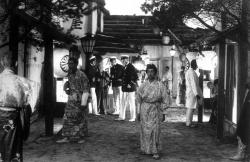
Harakiri
1919 -
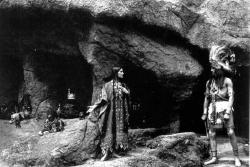
The Spiders
1919 -
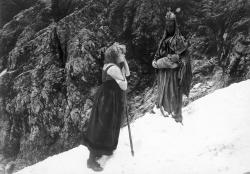
The Wandering Shadow
1920 -
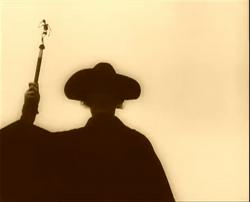
Destiny
1921 -
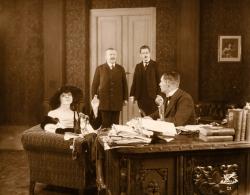
Four Around the Woman
1921 -
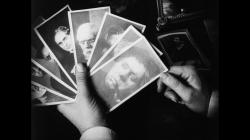
Dr. Mabuse the Gambler
1922 -

Die Nibelungen
1924 -

Metropolis
1927 -
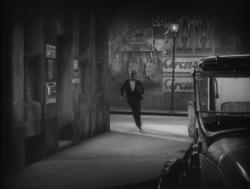
Spies
1928 -

Woman in the Moon
1929
We don’t do comments anymore, but you may contact us here or find us on Twitter or Facebook.



